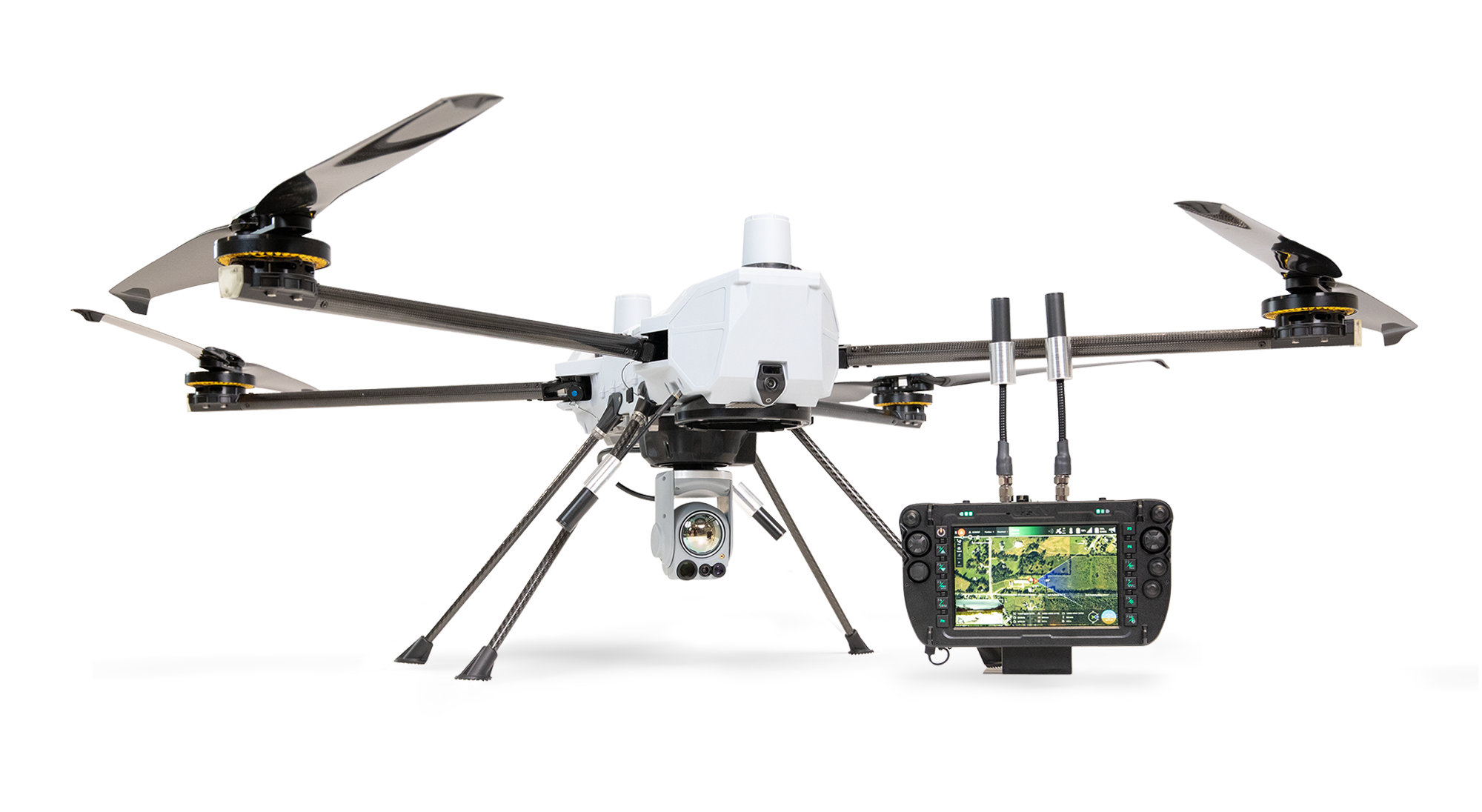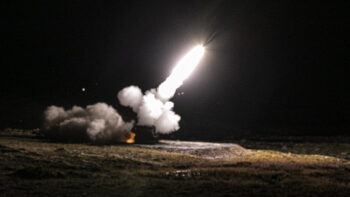
PDW’s C100 multi-mission quadcopter platform and third generation of the Blackwave radio is designed to overcome electronic warfare.
From its start in professional drone racing, Performance Drone Works (PDW) is now supplying special forces with quadcopters that can perform in hostile electronic warfare environments. We talk to PDW’s CEO and co-founder Ryan Gury about why a U.S.-based quadcopter market is essential for national security.
Breaking Defense: Tell us about Performance Drone Works.
Gury: Before forming PDW, I co-founded the Drone Racing League in New York. It was a venture-backed company, and we traveled the world hosting drone races that went live on NBC and ESPN. In doing that, we created novel technologies that didn’t exist in the drone industry before. First and foremost was a radio system that allowed a dozen concurrent links to travel multi-miles and never go down regardless of jamming, interference, or where we were in the world.

Ryan Gury is PDW’s CEO and co-founder.
We also had a stack of high-performance quadcopters that were destroyed at every event, 600 or so, and we’d have to rebuild them in a day or two. These were consumable platforms that could take a beating and always perform.
Within a few years of developing this and putting it on TV, we started getting inbound from special forces curious about our work with small drones and radios, and we began training them.
It was around this time that we understood that no one was developing tactical, small UAS for the military, and there’s a huge opportunity for our group to contribute.
Breaking Defense: What are the challenges facing drones when it comes to contested operations – everything from EW and jamming to urban environments and congested airspace?
Gury: Electronic warfare has hit the convergence point where mass adoption and capabilities are being used by the grander consumer space via the proliferation of software-defined radios. Moving signals outside of ISM, demodulation, jamming, spoofing – these are widespread, well-adopted strategies in the electromagnetic space quickly evolving in the battlespace.
It’s becoming incredibly clear that the days of having a live radio link to your vehicle at all times are over. Systems which use radios sparingly will be critical.
Same with GPS, which is being spoofed and jammed all the way from Norway to the Baltics. The entire Middle East does not have GPS. You can’t get Waze sometimes in Poland. You cannot rely on using GPS as a sensor anymore. If you have a system that relies on that, then it is not equipped for the battlefield.
Breaking Defense: PDW recently won an award from U.S. SOCOM for the continued development of Blackwave. Tell us about the award and Blackwave’s capabilities.
Gury: Blackwave is a set of technologies that we’ve been developing for about a decade. It uses a huge portion of the electromagnetic frequency, along with redundancy, and many other techniques that makes it incredibly difficult to detect, stop or decode signals going to that craft. That’s where we believe Russia and Ukraine will end up in a decade.
The third generation of Blackwave is a robust radio specifically designed to overcome electronic warfare. We think all of the radio systems and all the radio manufacturers are going to have to revisit their architecture.
If you’re not developing a radio system from scratch to just defeat electronic warfare, you’re not going to have a radio system that’s going to work in warfare. That’s all there is to it.
Breaking Defense: The C100 is your autonomous quadcopter multi-mission platform. What makes quadcopters applicable to special forces?
Gury: They’re the ultimate vehicle. They’re the most efficient. They hover sensors incredibly well. They’re small, reliable, direct drive, which means not a lot of moving parts. The reason why DJI only has quadcopters is because they’re just a superior system. There’s very little competition for American-made quadcopters, especially for defense.
Our C100 is built on modern design principles and leads the industry in many specifications. It allows you to fly sensors for 74 minutes, which is high. It’s an all-around workhorse. We believe that tactics like signal relays or FPV marsupial drops are the future and will pave the way for small units and tactical robotics just like you see on the eastern front. The medium sized quadcopter will resemble a mothership – acting as a central hub to small airborne robotics.
Breaking Defense: Final thoughts?
Gury: There needs to be more people in this space to make sure that we’re balancing out China, and a much broader market for American-made quadcopters. There’s only a handful of groups who know how to do it well. We’re one of them, and for the U.S. to stay ahead, we need more players in the space evolving technology. That’s the only way we will stay ahead.























